热门标签
热门文章
- 1Git的结构和使用_git结构
- 2el-admin 设置查询参数_eladmin crud 解析
- 3ChatGPT实战100例 - (18) 用事件风暴玩转DDD
- 4基于xilinx的tri-mode-eth-mac IP设置与使用详解_tri mode ethernet mac
- 5idea中的Git的基本操作_idea git怎么重启
- 6Tuxedo入门
- 7顺序表基本操作_顺序表的插入
- 8Django(9)|基于reseful-api风格的Django-framework_django restful api
- 9Python SMTP发送邮件_python通过 587端口发送邮件
- 10HR人才测评,什么是组织管理能力?如何测评组织管理能力?
当前位置: article > 正文
Maya-UE xgen-UE 毛发导入UE流程整理
作者:Gausst松鼠会 | 2024-04-13 21:19:57
赞
踩
Maya-UE xgen-UE 毛发导入UE流程整理
首先声明:maya建议用2022版本及一下,因为要用到Python 2 ,Maya2023以后默认是Python3不再支持Python2;
第一步:Xgen做好的毛发转成交互式Groom
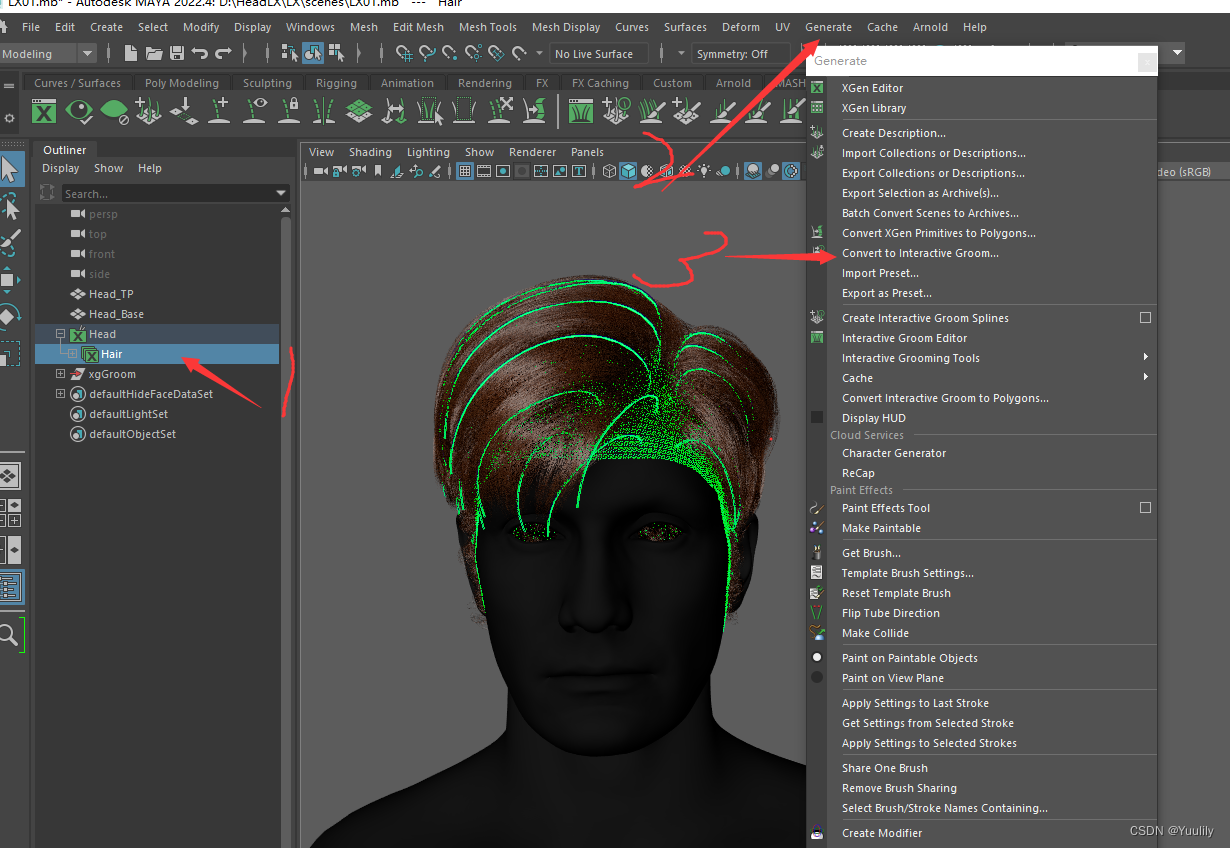
第二步:导出刚生成的交互式Groom缓存,需要设置一下当前帧,和写入宽度;到这里其实就可以直接导入到UE了,为了后面能做多颜色毛发和渐变毛发可以继续看,如果不需要,到这一步就可以直接打开UE导入了,按照后面的流程导入UE就可以了!
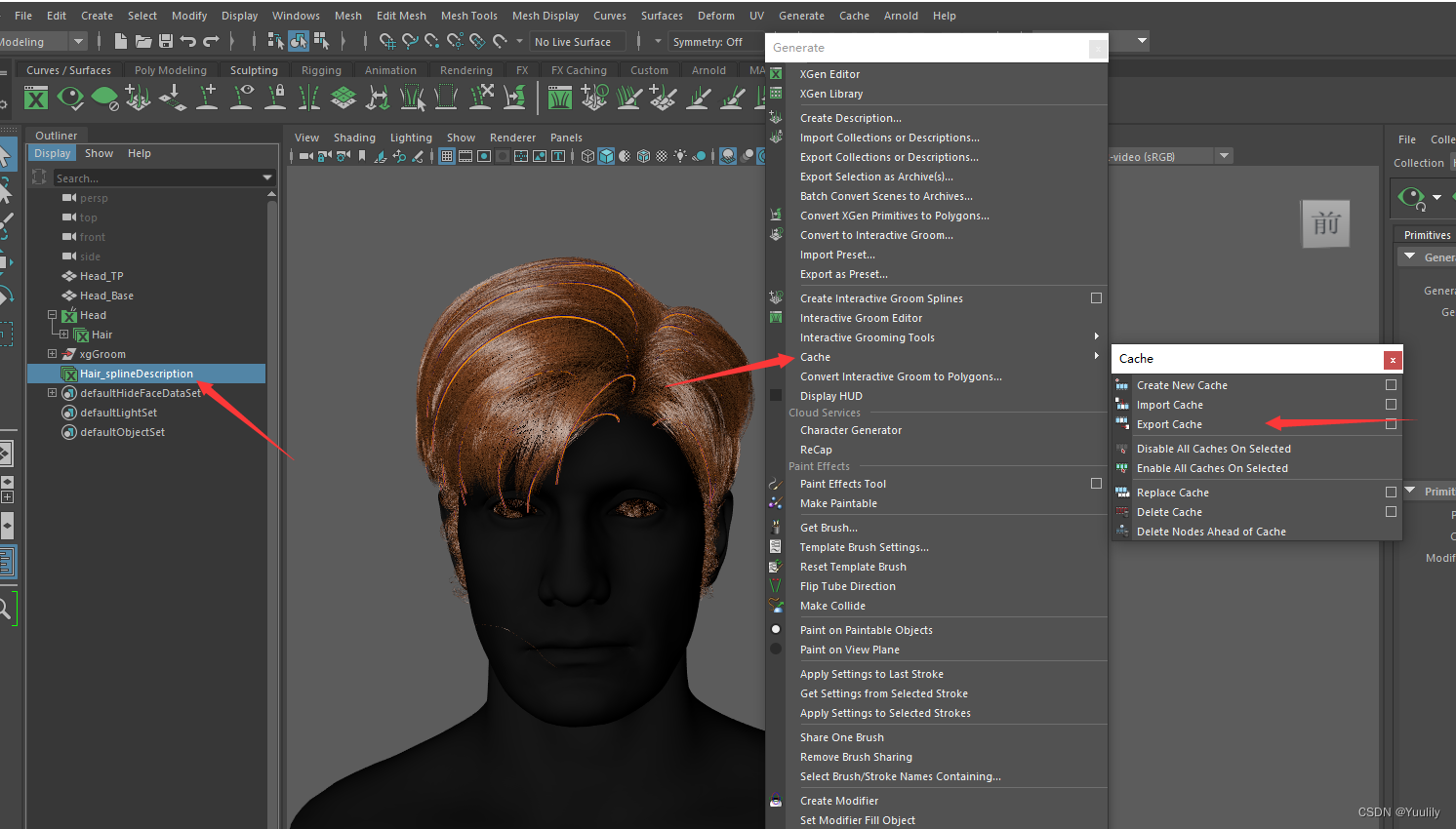
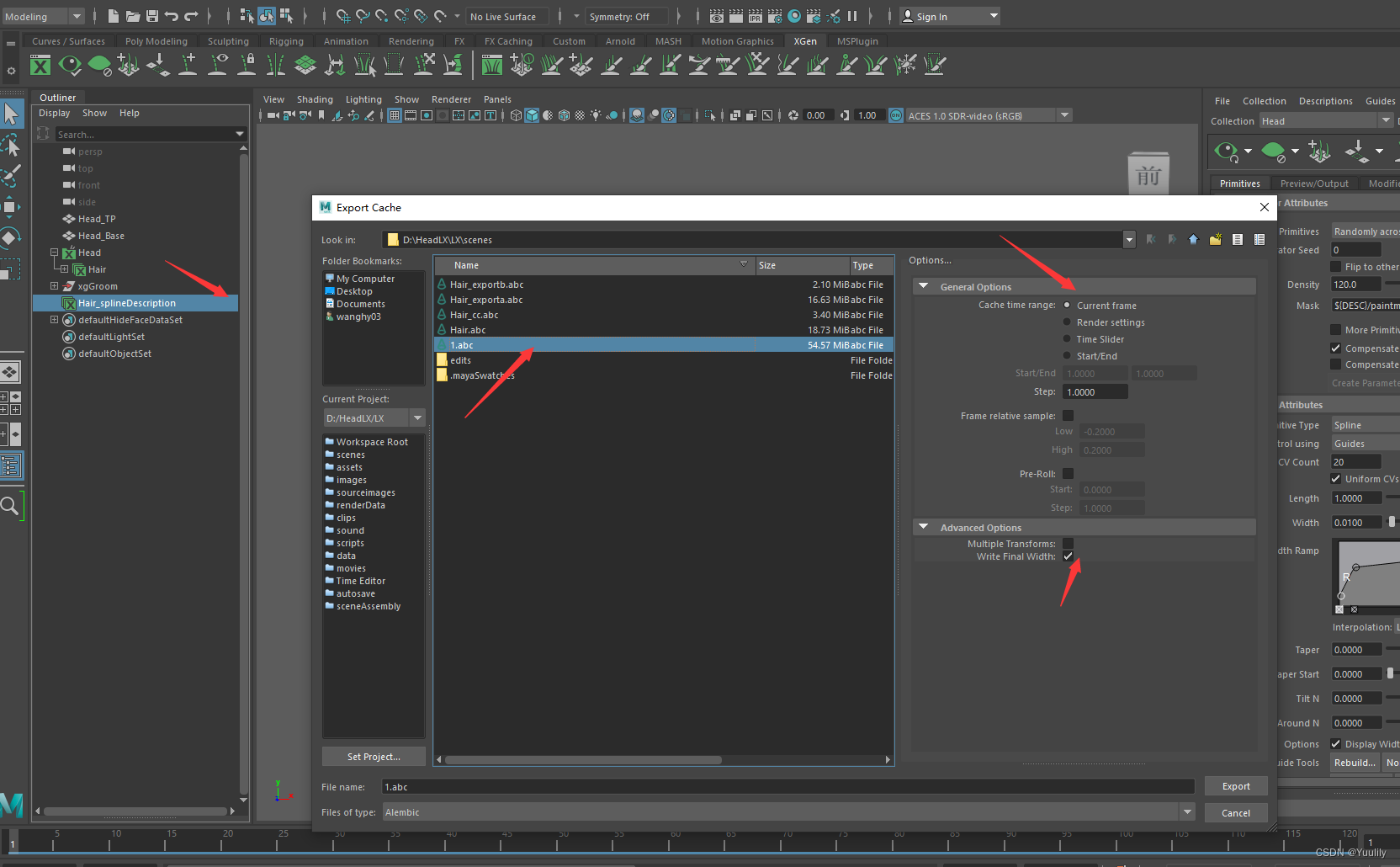
第三步:导入刚刚导出的缓存文件,导入后会根据毛发数量自动分组;
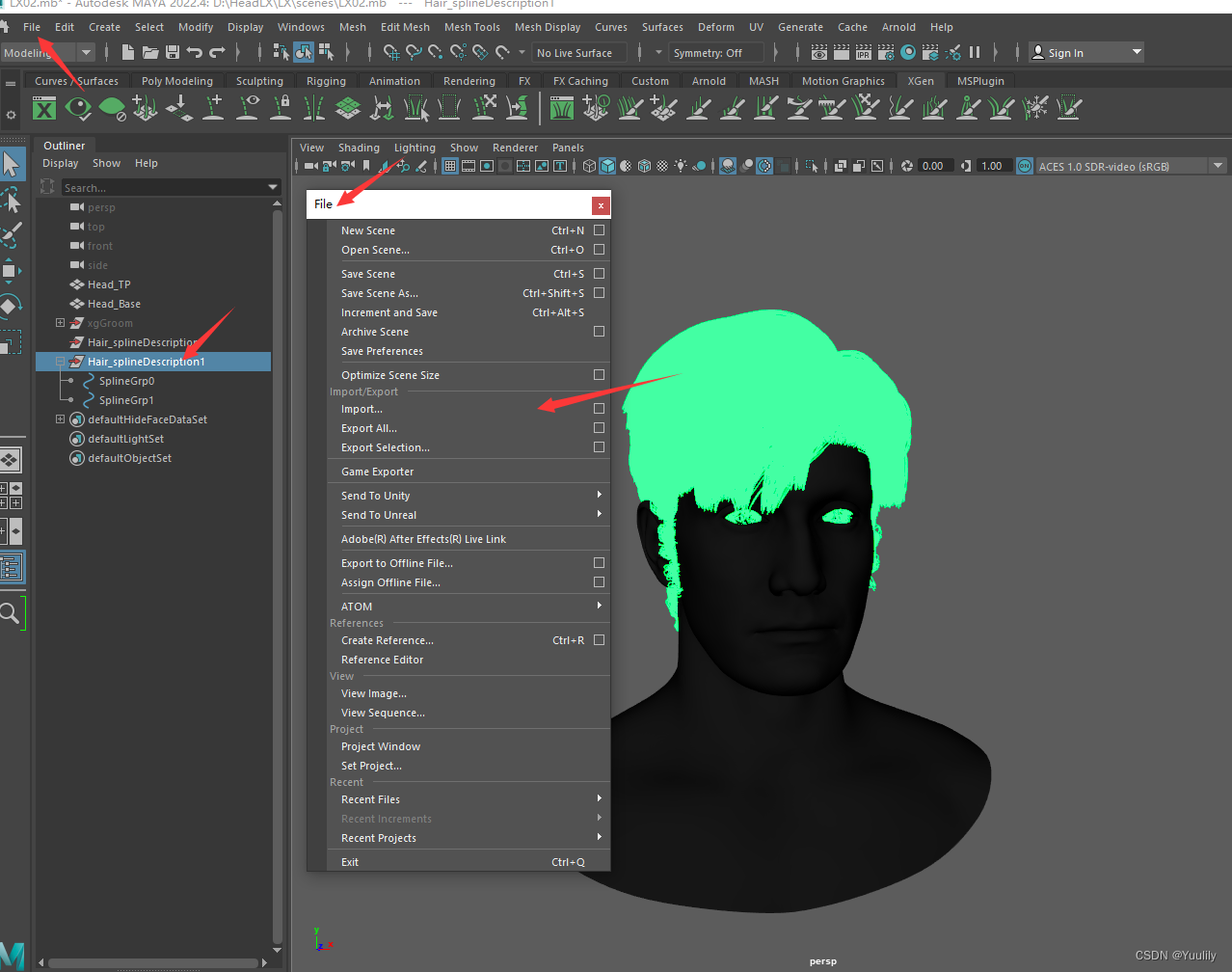
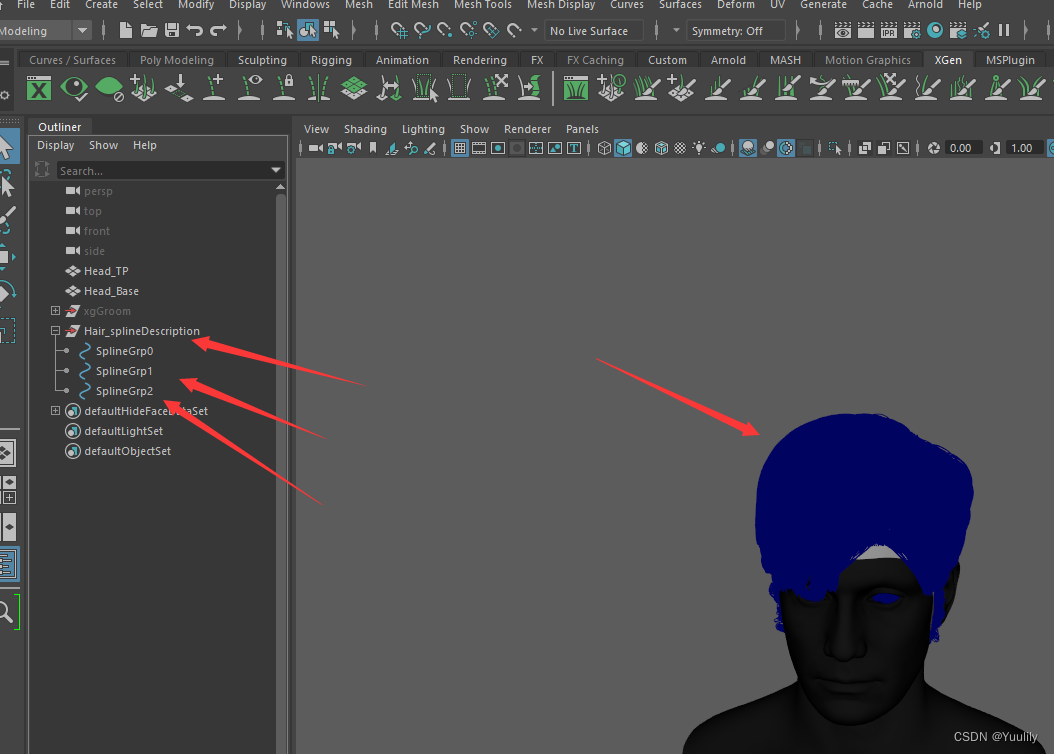
第四步:利用官方文档的Python脚本分别重新导出这三个分好组的缓存文件,这一步的目的是为了让缓存文件拥有UV,方便进去UE后根据需求继续调整(举例做渐变毛发和多颜色毛发);可以直接复制,有几个代码需要修改,看说明;
from maya import cmds from maya import OpenMaya import os def create_root_uv_attribute(curves_group, mesh_node, uv_set='map1'): ''' Create "groom_root_uv" attribute on group of curves. ''' # check curves group if not cmds.objExists(curves_group): raise RuntimeError('Group not found: "{}"'.format(curves_group)) # get curves in group curve_shapes = cmds.listRelatives(curves_group, shapes=True, noIntermediate=True) curve_shapes = cmds.ls(curve_shapes, type='nurbsCurve') if not curve_shapes: raise RuntimeError('Invalid curves group. No nurbs-curves found in group.') else: print "found curves" print curve_shapes # get curve roots points = list() for curve_shape in curve_shapes: point = cmds.pointPosition('{}.cv[0]'.format(curve_shape), world=True) points.append(point) # get uvs values = list() uvs = find_closest_uv_point(points, mesh_node, uv_set=uv_set) for u, v in uvs: values.append([u, v, 0]) #print (str(u) + " , " + str(v) ) # create attribute name = 'groom_root_uv' cmds.addAttr(curves_group, ln=name, dt='vectorArray') cmds.addAttr(curves_group, ln='{}_AbcGeomScope'.format(name), dt='string') cmds.addAttr(curves_group, ln='{}_AbcType'.format(name), dt='string') cmds.setAttr('{}.{}'.format(curves_group, name), len(values), *values, type='vectorArray') cmds.setAttr('{}.{}_AbcGeomScope'.format(curves_group, name), 'uni', type='string') cmds.setAttr('{}.{}_AbcType'.format(curves_group, name), 'vector2', type='string') return uvs def find_closest_uv_point(points, mesh_node, uv_set='map1'): ''' Find mesh UV-coordinates at given points. ''' # check mesh if not cmds.objExists(mesh_node): raise RuntimeError('Node not found: "{}"'.format(mesh_node)) # check uv_set uv_sets = cmds.polyUVSet(mesh_node, q=True, allUVSets=True) if uv_set not in uv_sets: raise RuntimeError('Invalid uv_set provided: "{}"'.format(uv_set)) # get mesh as dag-path selection_list = OpenMaya.MSelectionList() selection_list.add(mesh_node) mesh_dagpath = OpenMaya.MDagPath() selection_list.getDagPath(0, mesh_dagpath) mesh_dagpath.extendToShape() # get mesh function set fn_mesh = OpenMaya.MFnMesh(mesh_dagpath) uvs = list() for i in range(len(points)): script_util = OpenMaya.MScriptUtil() script_util.createFromDouble(0.0, 0.0) uv_point = script_util.asFloat2Ptr() point = OpenMaya.MPoint(*points[i]) fn_mesh.getUVAtPoint(point, uv_point, OpenMaya.MSpace.kWorld, uv_set) u = OpenMaya.MScriptUtil.getFloat2ArrayItem(uv_point, 0, 0) v = OpenMaya.MScriptUtil.getFloat2ArrayItem(uv_point, 0, 1) uvs.append((u, v)) return uvs def abc_export(filepath, node=None, start_frame=1, end_frame=1, data_format='otawa', uv_write=True): job_command = '-frameRange {} {} '.format(start_frame, end_frame) job_command += '-dataFormat {} '.format(data_format) job_command += '-attr groom_root_uv ' if uv_write: job_command += '-uvWrite ' job_command += '-root {} '.format(node) job_command += '-file {} '.format(filepath) cmds.AbcExport(verbose=True, j=job_command) def main(): export_directory = 'D:/Dev/Ref' hair_file = os.path.join(export_directory, 'hair_export.abc') curve_top_group= 'description1|SplineGrp0' uv_mesh='pPlane1' create_root_uv_attribute( curve_top_group , uv_mesh) abc_export(hair_file, curve_top_group) main()
- 1
- 2
- 3
- 4
- 5
- 6
- 7
- 8
- 9
- 10
- 11
- 12
- 13
- 14
- 15
- 16
- 17
- 18
- 19
- 20
- 21
- 22
- 23
- 24
- 25
- 26
- 27
- 28
- 29
- 30
- 31
- 32
- 33
- 34
- 35
- 36
- 37
- 38
- 39
- 40
- 41
- 42
- 43
- 44
- 45
- 46
- 47
- 48
- 49
- 50
- 51
- 52
- 53
- 54
- 55
- 56
- 57
- 58
- 59
- 60
- 61
- 62
- 63
- 64
- 65
- 66
- 67
- 68
- 69
- 70
- 71
- 72
- 73
- 74
- 75
- 76
- 77
- 78
- 79
- 80
- 81
- 82
- 83
- 84
- 85
- 86
- 87
- 88
- 89
- 90
- 91
- 92
- 93
- 94
- 95
- 96
- 97
- 98
- 99
- 100
- 101
- 102
- 103
- 104
- 105
- 106
- 107
- 108
- 109
- 110
- 111
- 112
- 113
- 114
- 115
- 116
- 117
- 118
- 119
- 120
- 121
- 122
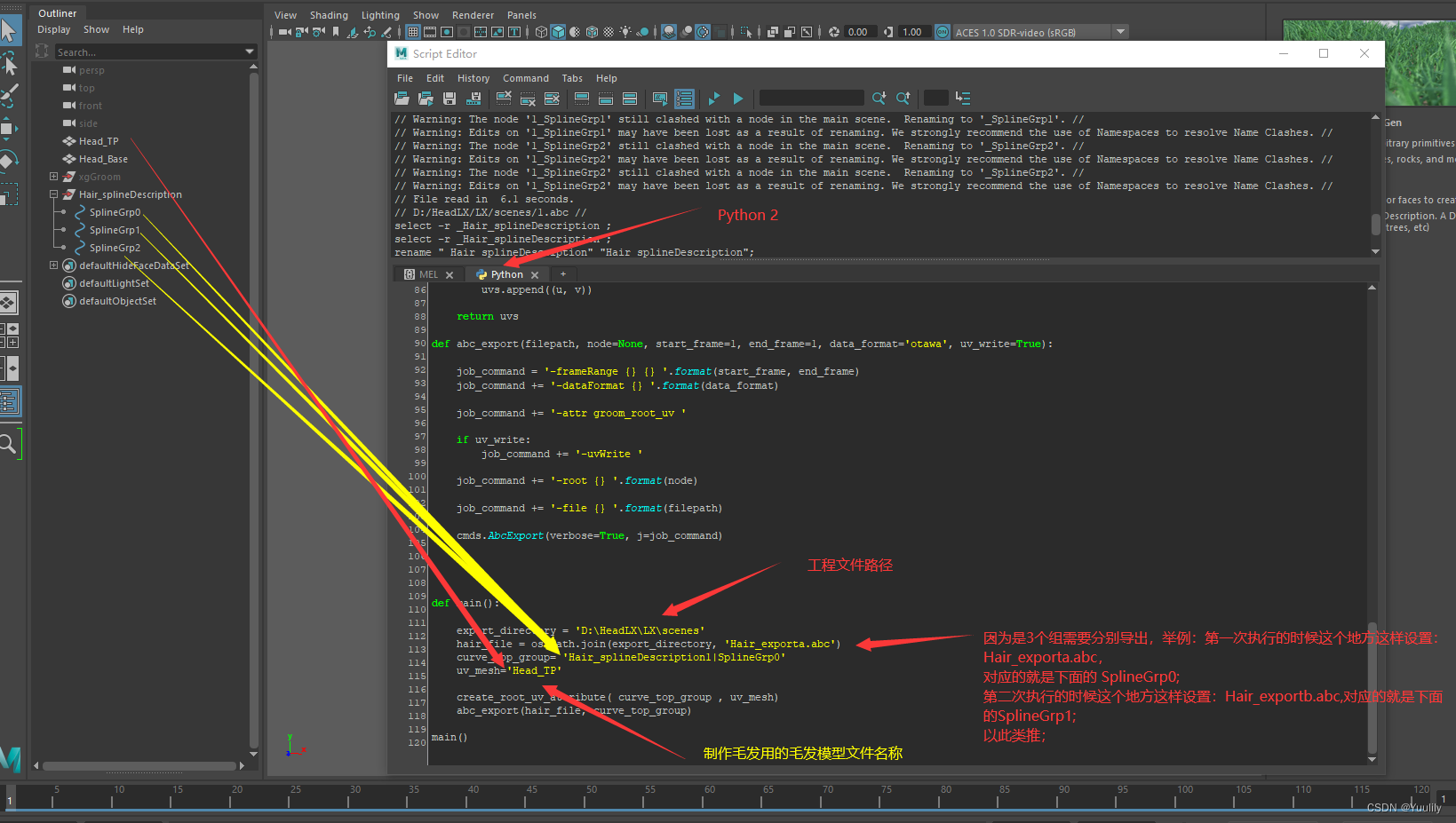
第五步:由于是分别导出的3个文件,因为三个分别导入UE有些麻烦也没必要,需要重新整合一下;重新开一个新的maya文件,把3个缓存文件重新导入到新的maya里面,再次整体导出一个缓存文件;这里需要添加一个groom_root_UV(说明 :groom_root_uv属性为每根头发指定它所附加到的基础网格uv。该属性是可选的,如果未指定,将使用球形贴图在引擎中自动生成一个根UV)
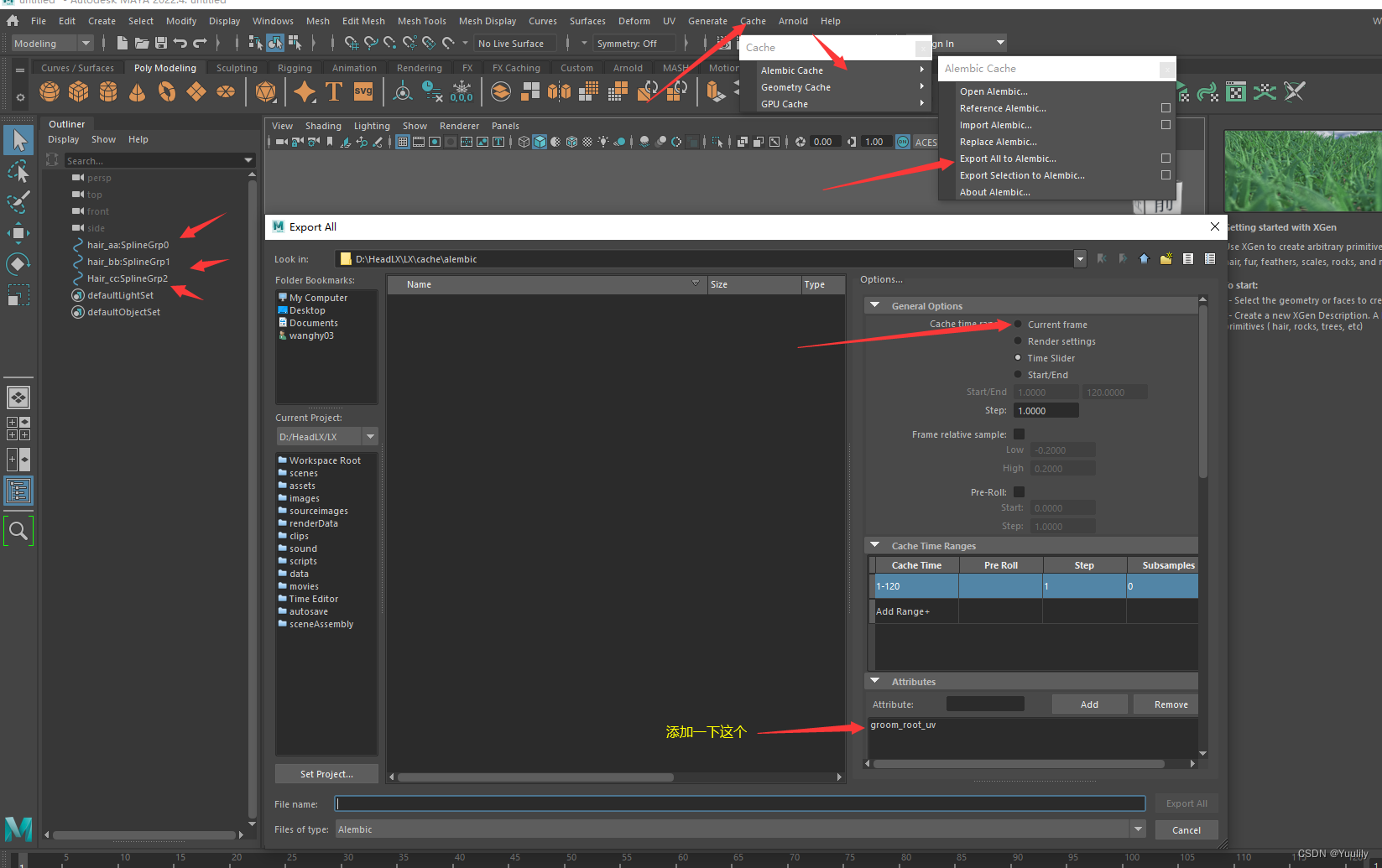
第六步:导入UE,需要设置一下项目设置和插件;
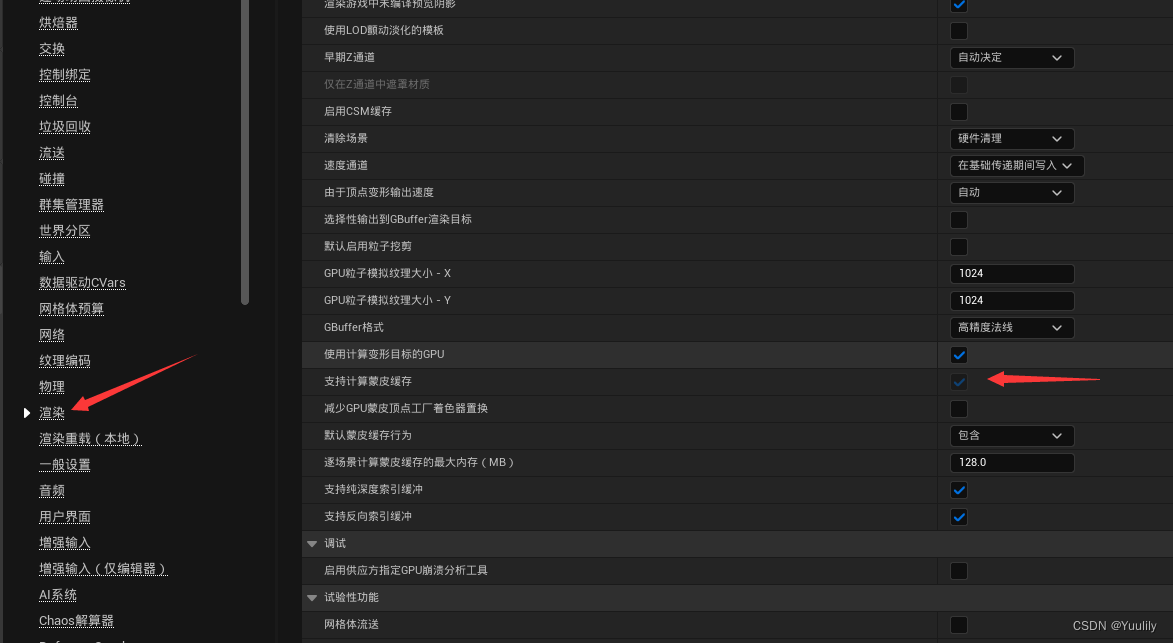
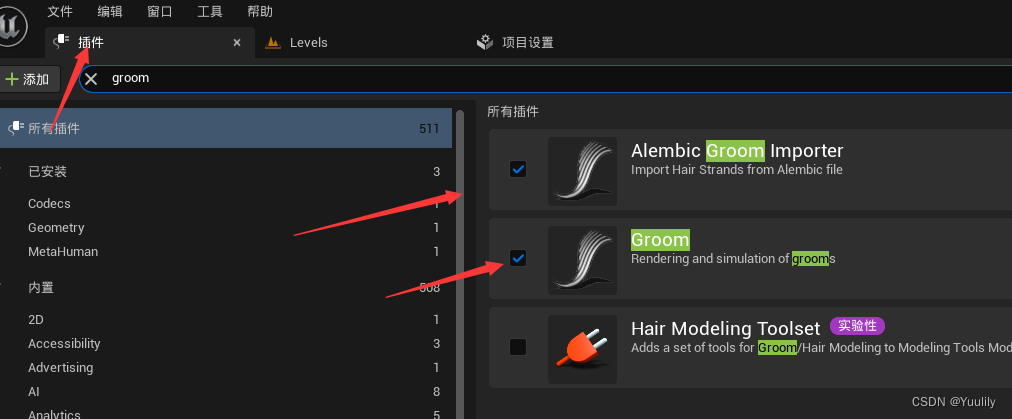
然后导入窗口的旋转设置一下;
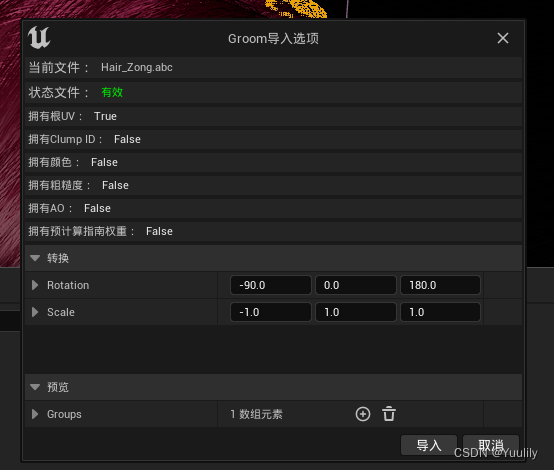
这里可以设置一下基础属性;
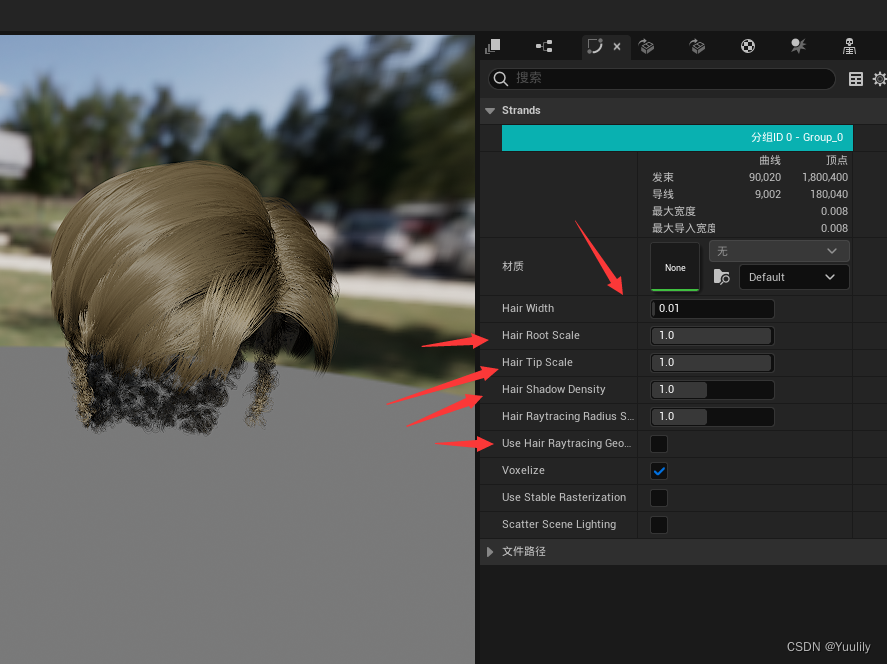
这里可以开启物理模拟;
 可以创建绑定;这样就可以替换默认的头发了,也可以通道添加组件添加到骨骼模型上;
可以创建绑定;这样就可以替换默认的头发了,也可以通道添加组件添加到骨骼模型上;

打开角色蓝图,就可以替换之前的模型资产和材质了;
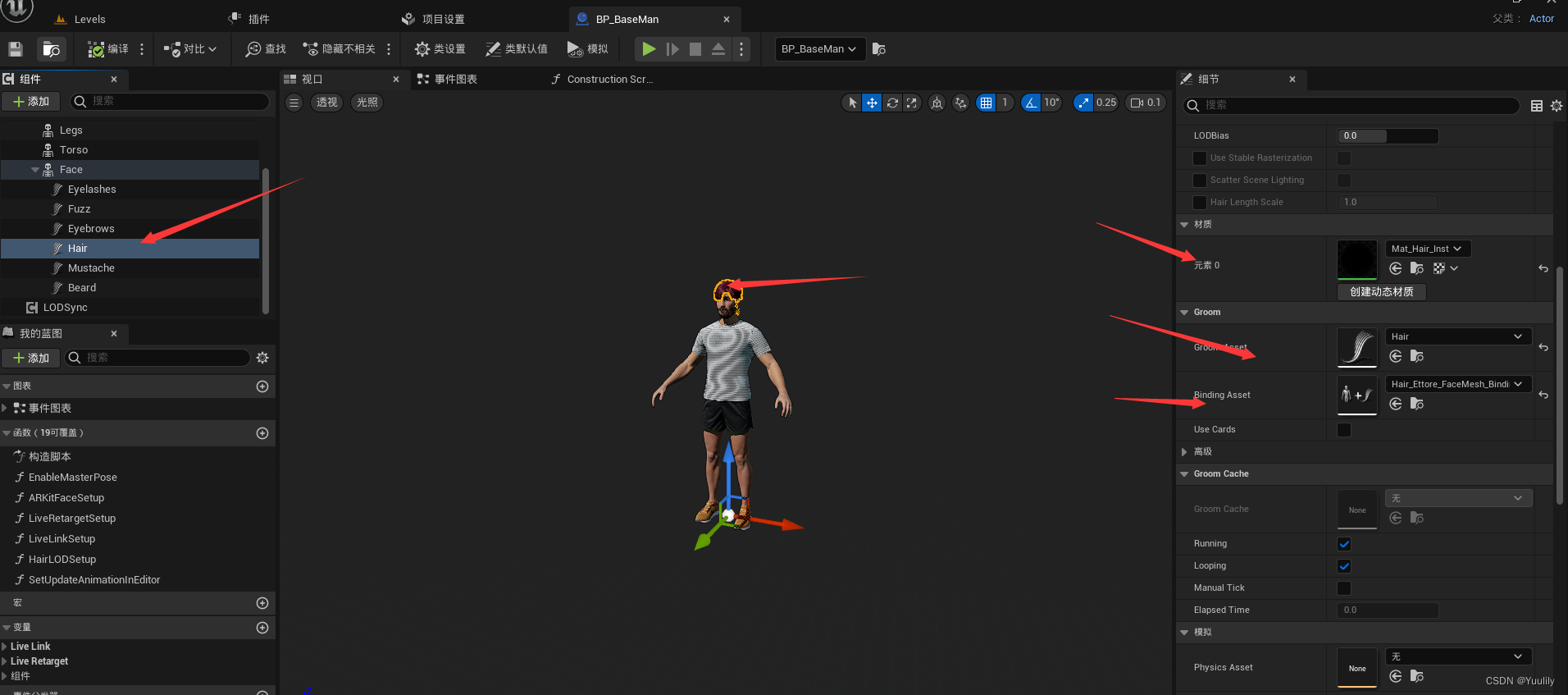
材质球设置:
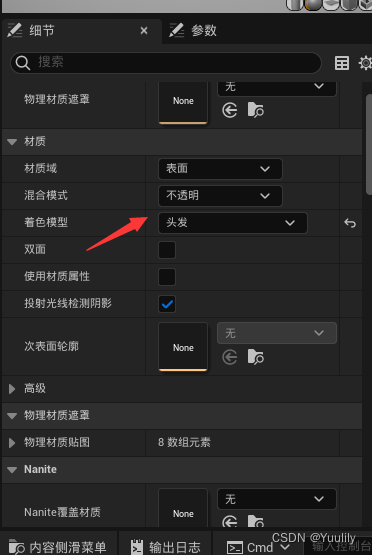
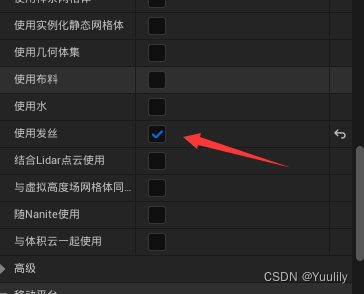

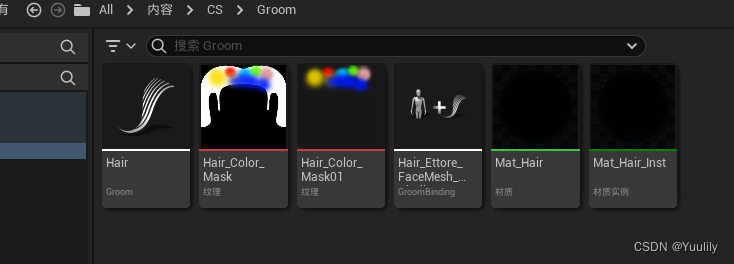
这里可以通过绘画贴图来实现不同颜色的发色;
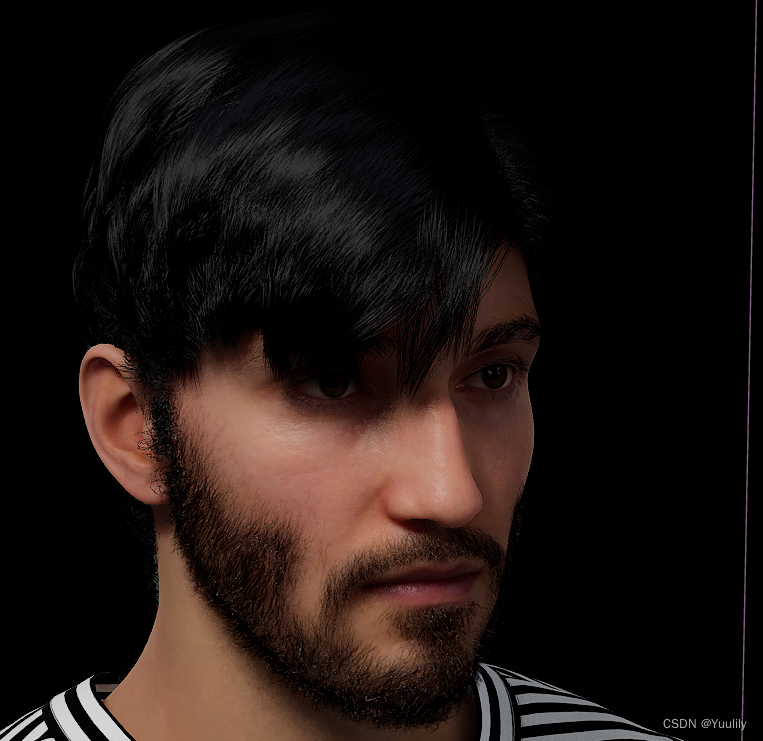
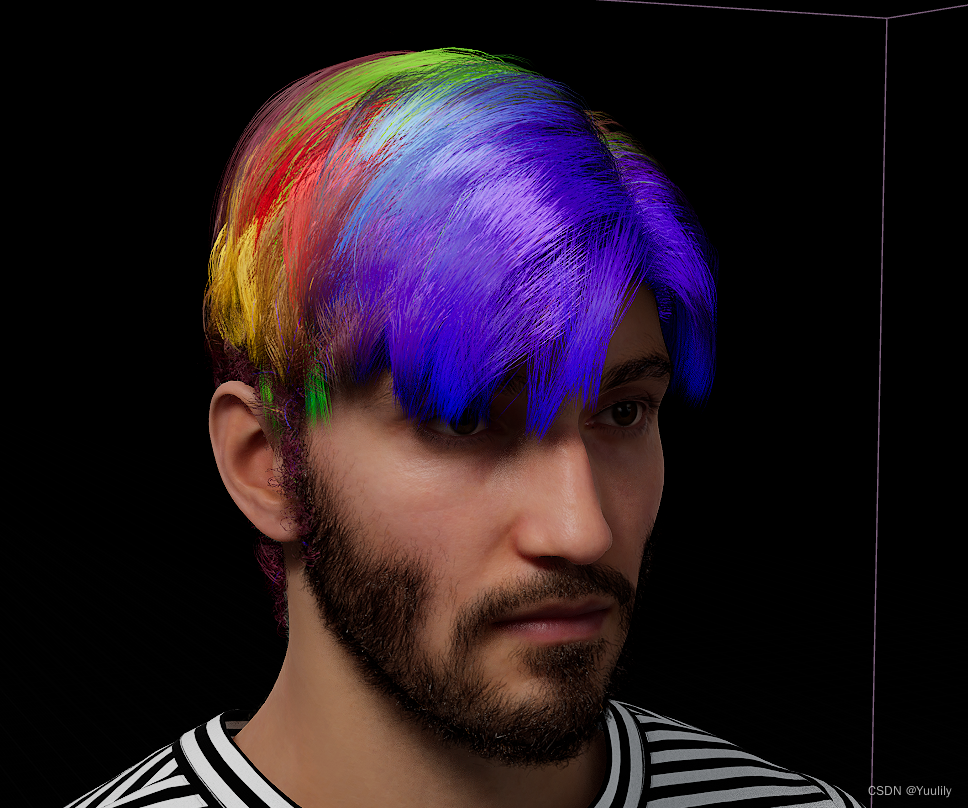
声明:本文内容由网友自发贡献,不代表【wpsshop博客】立场,版权归原作者所有,本站不承担相应法律责任。如您发现有侵权的内容,请联系我们。转载请注明出处:https://www.wpsshop.cn/w/Gausst松鼠会/article/detail/418597
推荐阅读
相关标签



